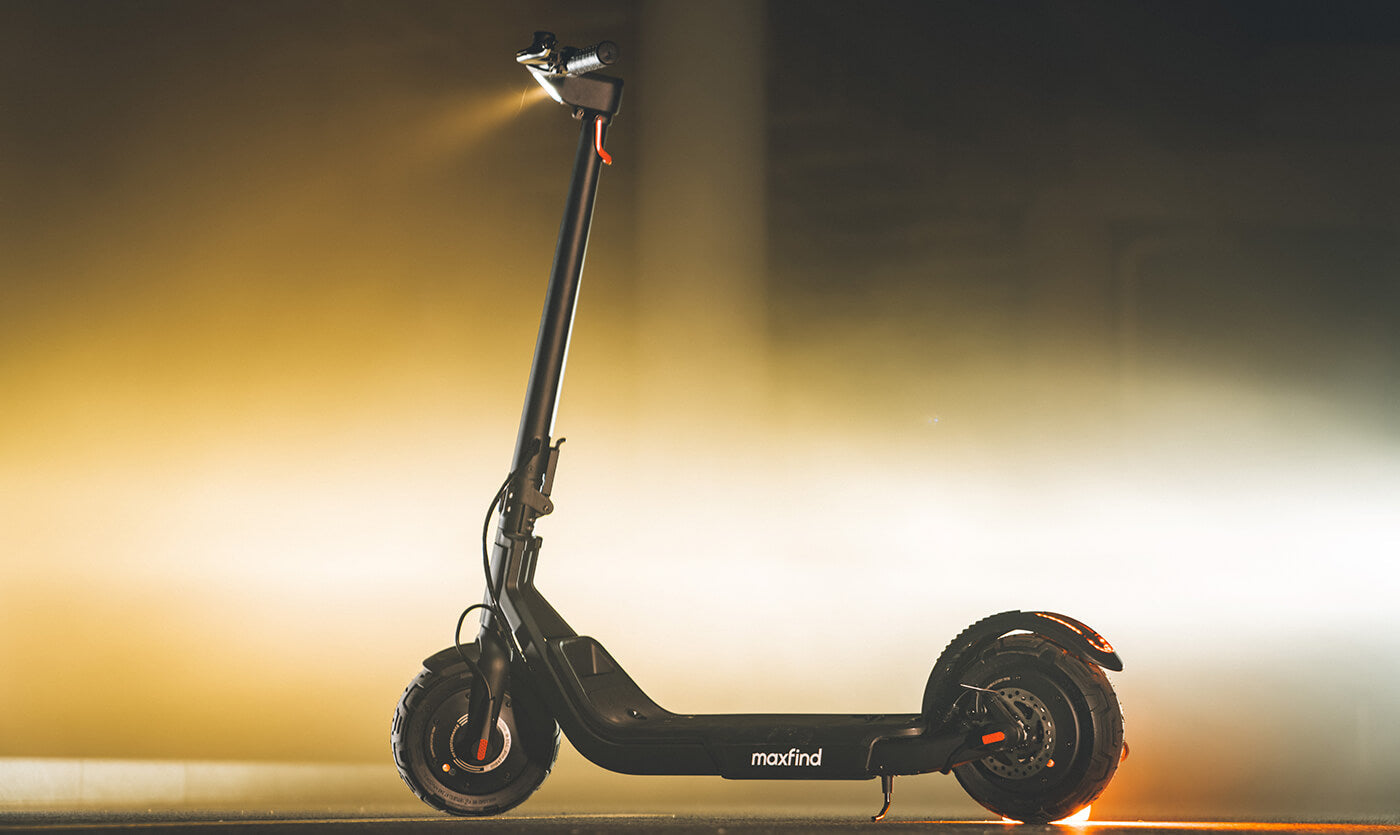When considering an electric scooter for adults, it's important to understand the full cost of ownership. This includes the initial purchase price, which can range from $300 to $600 for a standard commuter scooter, and even higher for premium models. In this guide, we’ll break down all these costs to help you decide if an e-scooter fits your budget and needs. Keep reading to learn more about the true costs of owning an electric scooter.

Understanding the Total Cost of Ownership (TCO)
Before diving into the specific costs, it's important to recognize that owning an e-scooter goes beyond the initial price. The total cost of ownership (TCO) includes upfront costs, maintenance, battery replacements, charging, and even insurance. Here’s a breakdown of each factor:
Upfront Purchase Cost – What Are You Paying For?
Pain Point: The price tag of an e-scooter can vary significantly depending on the model, brand, and features. The upfront cost is often a major deciding factor, but many users don’t realize all the components they’re paying for.
Actionable Solution:
-
Budget Models: Expect to pay between $200 and $400 for basic models. These are great for short distances and less frequent use.
-
Mid-Range Models: Prices between $400 and $800 offer better battery life, more power, and extra features like suspension or better tires.
-
Premium Models: If you’re looking for long-range travel, faster speeds, and advanced features, expect to pay anywhere from $800 to $1,500+.
Tip: Choose a model that fits both your needs and budget. For example, the Maxfind Electric Scooter offers a perfect balance of cost and quality, making it a great option for both city commuting and leisurely rides.
Related Reading: Fastest Electric Scooter Under $1000

Hidden Costs: Battery Life, Maintenance, and Charging
While the upfront price is easy to understand, there are other ongoing costs that can catch first-time buyers by surprise.
Battery Replacement – How Long Will It Last?
Pain Point: Batteries are one of the most expensive components of an e-scooter, and they degrade over time. Many users are unsure about how long the battery will last and when they should expect to replace it.
Actionable Solution:
-
Battery Lifespan: Most e-scooter batteries last for 500 to 1,000 charge cycles. With average daily use, this could mean 1 to 3 years before a replacement is needed.
-
Cost of Replacement: Expect battery replacement to cost anywhere from $300 to $500, depending on the scooter model and battery type.
Maintenance and Repairs – What’s Involved?
Pain Point: Though e-scooters have fewer moving parts than traditional vehicles, they still need maintenance. Regular upkeep can add up, especially if something goes wrong with the motor, brakes, or tires.
Actionable Solution:
-
Common Maintenance Needs: Regular tasks include checking tire pressure, lubricating the brakes, and cleaning the scooter.
-
Repair Costs: Tire replacements can cost between $100 and $200, and motor repairs can run between $200 and $400 depending on the issue.
-
Warranties: Look for scooters with a comprehensive warranty (typically 1-2 years) that covers major components like the motor and battery.
Tip: Consider buying a scooter with a service package or an extended warranty. This can help reduce costs for maintenance in the first few years of ownership.
Charging Costs – What Should You Expect?
Pain Point: Many potential buyers underestimate how much it costs to charge their e-scooter regularly. Charging costs, though relatively low, can still add up over time.
Actionable Solution:
-
Cost Per Charge: Charging an e-scooter typically costs around $0.10 to $0.30 per full charge, depending on local electricity rates.
-
Monthly Costs: If you charge your e-scooter daily, this could add up to about $3 to $9 per month in electricity costs.

Comparing E-Scooters to Other Transportation Methods
One of the biggest considerations when purchasing an e-scooter is whether it’s a more cost-effective option than other forms of transportation, such as cars, public transportation, or bicycles.
E-Scooter vs. Car: Gas, insurance, and parking costs for a car can total $300 to $600 per month, while an e-scooter costs roughly $20 to $50 in maintenance and charging per month.Is an E-Scooter Worth It Compared to a Car?
Pain Point: Users may worry that the upfront cost of an e-scooter is too high compared to their current mode of transportation, such as driving a car.
Actionable Solution:
-
Total Cost of Ownership Comparison: An e-scooter can save you money in the long run. For example, you’ll avoid the costs of gas, car maintenance, and parking fees.
-
E-Scooter vs. Car: Gas, insurance, and parking costs for a car can total $300 to $600 per month, while an e-scooter costs roughly $20 to $50 in maintenance and charging per month.
Tip: If your daily commute is less than 5 miles, an e-scooter can be a cost-effective alternative to driving a car. It can save you money on fuel, insurance, and parking, plus reduce your carbon footprint.
E-Scooter vs. Public Transit: Which Is Cheaper?
Pain Point: Users might compare the costs of an e-scooter to public transit fares and wonder if the scooter is worth the extra investment.
Actionable Solution:
-
Public Transit Costs: Monthly public transit passes typically cost between $50 and $150, depending on your location.
-
E-Scooter Costs: If you use your e-scooter daily, charging and maintenance costs are generally lower than a public transit pass over the course of a year.

Additional Considerations: Insurance, Safety Gear, and Incentives
Do You Need Insurance for Your E-Scooter?
Pain Point: Some users may not be aware that insurance for their e-scooter could be an additional cost, especially in cities where e-scooters are subject to specific regulations.
Actionable Solution:
-
Insurance Costs: E-scooter insurance typically costs $5 to $15 per month, depending on the coverage you choose.
-
Mandatory in Some Areas: Some cities require liability insurance, while others leave it up to the rider. Always check local regulations before purchasing.
Tip: Consider investing in personal liability insurance if you plan to use your e-scooter in busy urban areas, as accidents and injuries can be costly without insurance.
Safety Gear and Local Laws
Pain Point: Many riders might not realize they need safety gear or be aware of local laws regarding helmet use and other requirements.
Actionable Solution:
-
Safety Gear: Helmets, knee pads, and elbow pads can cost between $50 and $200. Some areas require helmets by law, so check your local regulations.
-
Safety Features: Look for scooters with built-in safety features such as dual brakes, lights, and reflective surfaces to enhance visibility.

What is the maximum speed and range of electric scooters?
The maximum speed and range of electric scooters can vary depending on the model you choose. Typically, most e-scooters have a top speed of around 15 to 25 mph (24 to 40 km/h), with some higher-end models going faster. The range on a full charge can vary from 15 to 36 miles (24 to 60 km), depending on the scooter's battery capacity, motor, and the terrain.
Related Reading: Best Long Range Electric Skateboard 2024
Are there any additional fees or taxes when purchasing an e-scooter?
Yes, there might be additional fees or taxes when purchasing an e-scooter. These can include sales tax, shipping fees, or handling charges depending on where you're buying from.
How long do electric scooters last overall?
The lifespan of an electric scooter depends on various factors, such as the model, how often you use it, and how well you maintain it. On average, a well-maintained scooter can last 3 to 5 years. The battery typically lasts 1 to 3 years before needing a replacement, but the scooter’s frame, motor, and other components can last longer if you follow maintenance guidelines. Regular care, like proper storage and avoiding overuse, can help extend its life.
Can I ride an electric scooter in all weather conditions?
Most electric scooters are designed for fair-weather use, but some models are water-resistant or waterproof to handle light rain. However, riding an e-scooter in heavy rain, snow, or icy conditions is not recommended as it can damage the electronics, affect performance, and increase the risk of accidents. Always check the scooter’s IP rating (Ingress Protection) to see its resistance to water and dust, and make sure to ride carefully in wet or slippery conditions.
Are there financing options for purchasing an electric scooter?
Yes, many retailers and brands offer financing options for purchasing an electric scooter, allowing you to spread out the cost over time. These financing plans can include installments or pay-as-you-go options. Interest rates, repayment periods, and eligibility for financing may vary, so be sure to check with the retailer or manufacturer to see the available plans. Some companies also offer subscription services where you can rent the scooter instead of buying it outright.
Related Reading: Is Riding an E-skateboard in Rain Feasible?
Conclusion
The total cost of owning an electric scooter involves more than just the upfront price. While e-scooters are a great option for reducing transportation costs in the long run, they come with additional expenses like maintenance, battery replacement, and charging. Understanding these costs and comparing them to other transportation methods will help you make a more informed decision.






Share:
How Skateboarding Entered the Olympics
Is 20 Mph Considered Fast for an Electric Scooter?